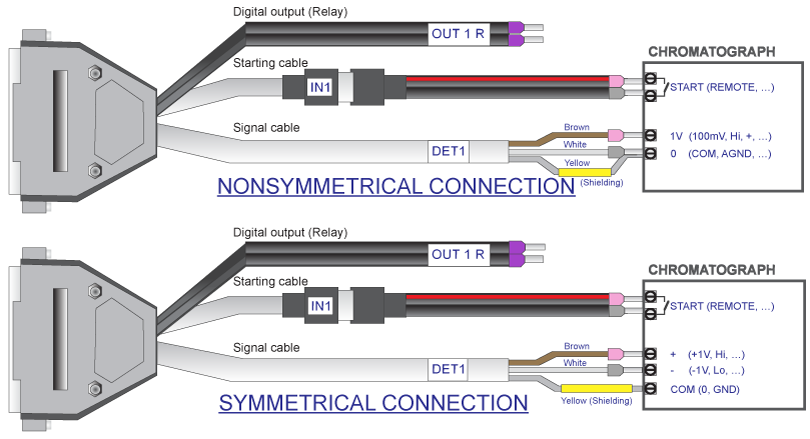Chromatograph
Connect cables according to one of the diagrams in Fig "Possible types of connection between the Clarity station and a chromatograph"

Possible types of connection between the Clarity station and a chromatograph
Note:
Since the introduction of the INT7 converter, all DataApex A/D converters use the same standard INT7 Connector.
Connecting the signal cables:
Signal inputs of the Colibrick are symmetrical: red/brown (+), white (-), yellow shielding (= analogue ground/copper braiding).
Caution:
The shielding must be connected since it also serves as the analogue ground for the measurement. In the case of an asymmetrical detector output (only two leads/terminals/pins/screws), the shielding must be connected to the white lead! No lead of the signal cable can remain unconnected.
Try to connect the signal cable to the chromatograph detector output with the largest possible level of signal. This one is usually labeled as INTEGRATOR (signal approx. 1 V). The level of the signal on the output marked as RECORDER is only about 10 mV.
For an easier modification of the wiring, we supply a SV9 Terminal board (p/n SV9) with screw contacts.
Connecting the starting cables:
The starting input reacts to a change of the TTL logical level (5 V) or to a connection by any contact (button, contact of relay). It can be used for a remote start from a chromatograph, or from a valve with a contact closure when injecting manually.
The input implicitly reacts to a change from HIGH to LOW (or closing of a contact). By switching the Down item to Up in the Ext. Start/Stop section from the Method Setup - Measurement dialog (accessible from the